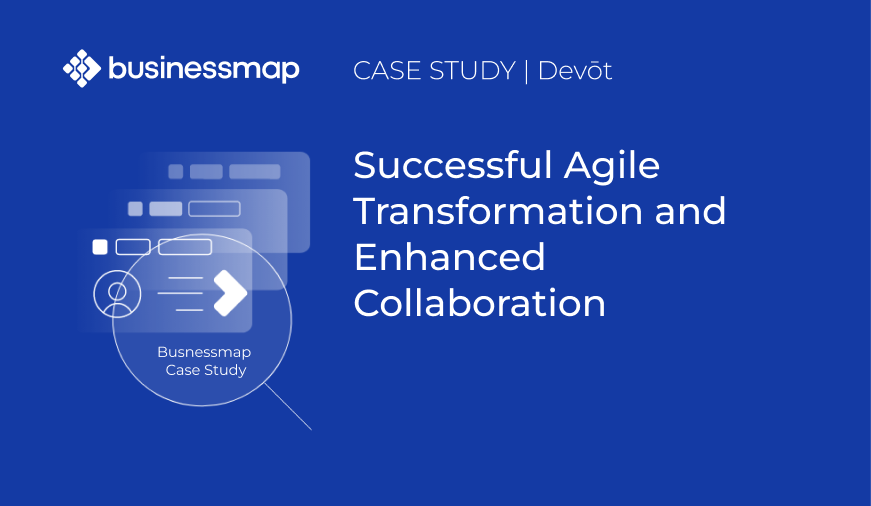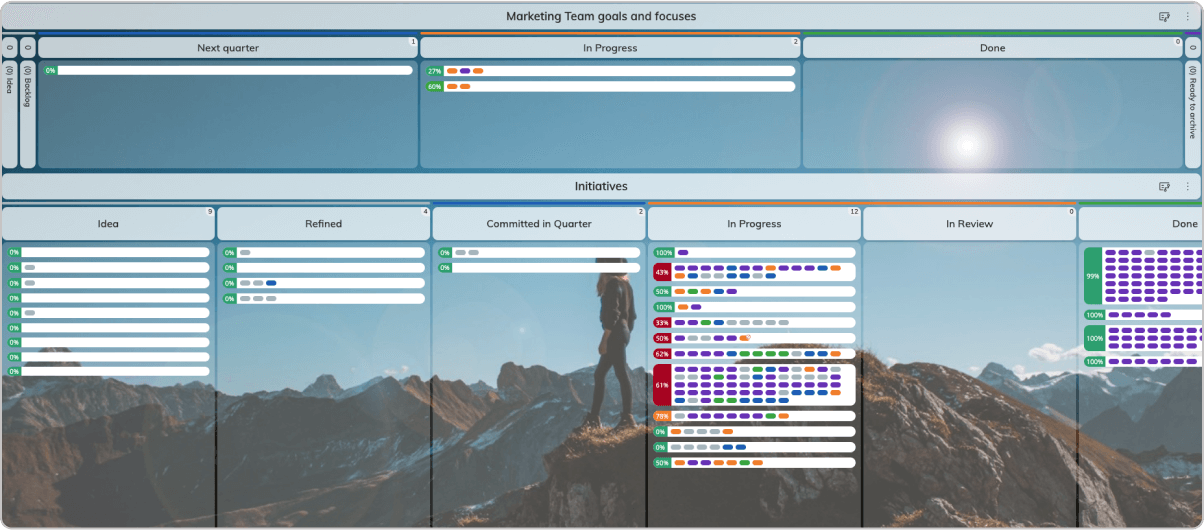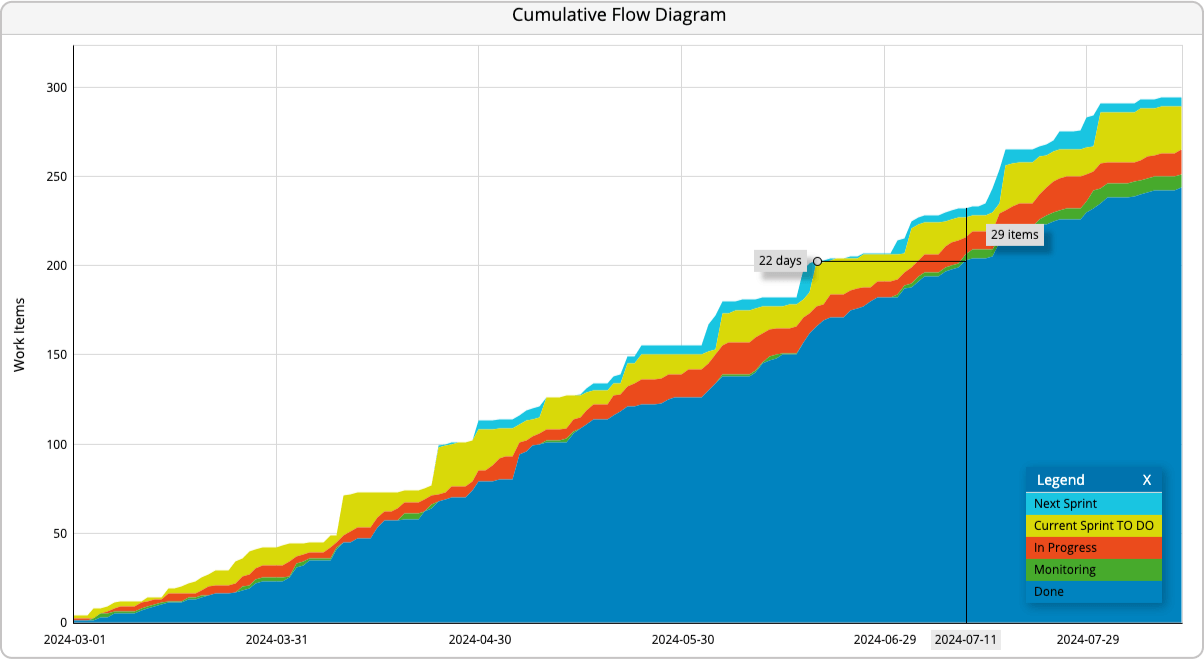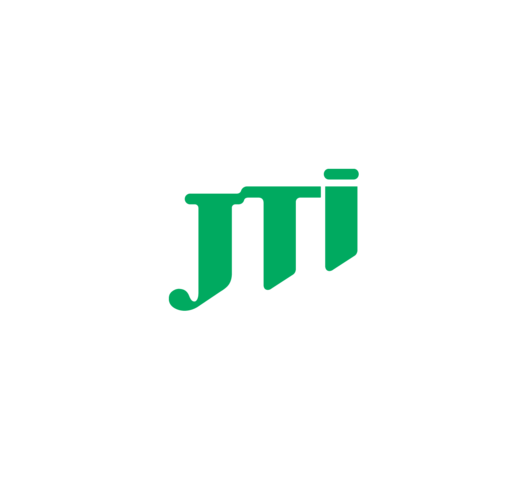
Devōt: Building the future of web and mobile applications
Devōt is a dynamic software development company specializing in web and mobile applications, headquartered in Zagreb, Croatia. The company offers comprehensive product development services, including product discovery, UX design, and consulting, with teams that seamlessly integrate into its clients' projects.
Devōt’s expertise spans the entire software development lifecycle, ensuring a holistic approach to project execution.
Initial Challenges
As a growing remote software company, Devōt faced a challenge in maintaining transparency and efficiency across its departments. The rapid expansion of the team necessitated a streamlined approach to keep everyone informed about ongoing projects and processes. This situation increased pressure to participate in numerous meetings while ensuring that daily tasks were managed effectively, preventing critical issues from being overlooked.
We realized the need for a robust system to visualize work at both macro and micro levels. This visualization was essential for identifying bottlenecks and planning our hiring processes effectively, as it helped pinpoint areas where additional resources were required.
Moreover, the transition of data from various management tools to Businessmap was crucial, with our Scrum coaches playing a pivotal role in onboarding teams to Businessmap and instilling agile methodologies.
Through methodical implementation, we established a unified work system that significantly improved collaboration and productivity, aligning our efforts with overarching company initiatives.
Key Challenges and Goals
Devōt's primary objectives were to:
- Establish a unified work language for clarity in task documentation.
- Determine essential meeting types to maximize efficiency.
- Develop a prioritization system aligned with company-level initiatives.
- Ensure easy access to information and tasks for all team members, especially in a hybrid work model.
- Achieve transparency in workload distribution across the company.
- Prevent the spread of resources across parallel projects.
- Enhance collaboration between technical and non-technical teams.
Choosing Businessmap, Implementation Journey, and Ways of Working
Before adopting Businessmap, we experimented with several work management tools that proved cumbersome as our organization grew.
We needed a tool that offered both flexibility and ease of use, allowing quick process adjustments as needed.
Businessmap stood out for its clear process outlines and adaptability, making it an ideal choice for our evolving needs.
Our teams employ various agile practices, including:
- Scrum
- Kanban
- Extreme Programming
Key practices across all teams include planning, daily standups, and retrospectives. The gradual introduction of agile principles, guided by our Agile coaches and Scrum Masters, facilitated a smoother transition to a more flexible, iterative planning approach, minimizing resistance to change.
In the marketing department, for example, Agile practices enable rapid adjustments based on market research and consumer trends. Continuous strategy refinement ensures campaigns are responsive to market shifts.
Meanwhile, the technical teams benefit from iterative processes that enhance feedback responsiveness, reduce time-to-market, and improve the quality of our software products.
Implementing Work in Progress (WIP) limits has been crucial in preventing overextension, allowing teams to focus on completing projects efficiently.
Current Use of Businessmap
Businessmap is utilized across all departments at Devōt, from Developers and QA to HR and Marketing. The tool facilitates communication and task management, ensuring consistency in work processes regardless of the nature of the task—be it software development or financial planning.

Post-Implementation Improvements
Tracking the progress and completion speed of various projects allowed us to better align our personnel needs across departments, and it helped us keep our strategic goals in sight. Team leads and project managers can easily identify if there are blockers on an individual, team, or project level.
We noticed many small improvements which combined have contributed to lower costs, employee satisfaction as well as faster delivery.
Our most important metric for success was and still is delivered working software.
The marketing team, for example, can manage campaigns more dynamically, employing Agile processes to test and adjust tactics in real-time based on direct consumer feedback. We measure workflow effectiveness by tracking the number of tickets completed in a sprint, not to speed up the work but to ensure accurate planning.
The same approach applies to initiatives, ensuring they are completed within a reasonable timeframe, indicating they are well-defined and manageable. Technical teams benefit from the iterative process that allows for adapting quickly to feedback, reducing time to market, and improving the functionality and user experience of web applications and mobile app development projects.
Thanks to the cumulative flow diagram, for example, we can see if we have too many work items in progress and respectively investigate why this is happening.

Overall, by integrating Businessmap into our workflow, we have enhanced team collaboration, improved team efficiency, quickly identified blockers, and improved communication and progress visibility across all departments.
Future Plans
While we have successfully integrated Businessmap across all departments, we acknowledge there is still untapped potential in the platform. We aim to explore various features to enhance task estimation and planning accuracy.
Our goal is to continue leveraging Businessmap's capabilities to further streamline our processes and boost overall efficiency across all teams.
Key Takeaways
Improved Transparency and Communication: Businessmap has streamlined communication and task management, particularly between technical and non-technical teams.
Effective Workload Management: The implementation of WIP limits has enabled more efficient project completion.
Agile Transformation Success: Daily standups, retrospectives, and continuous refinement have enhanced project predictability.
Broad Adoption of Businessmap: The tool's flexibility and ease of use have made it a central part of our work processes.
Continuous Improvement: By consistently refining our processes, we have achieved significant improvements in cost, employee satisfaction, and delivery speed.
Want to achieve the same results?
Book a Product Demo












